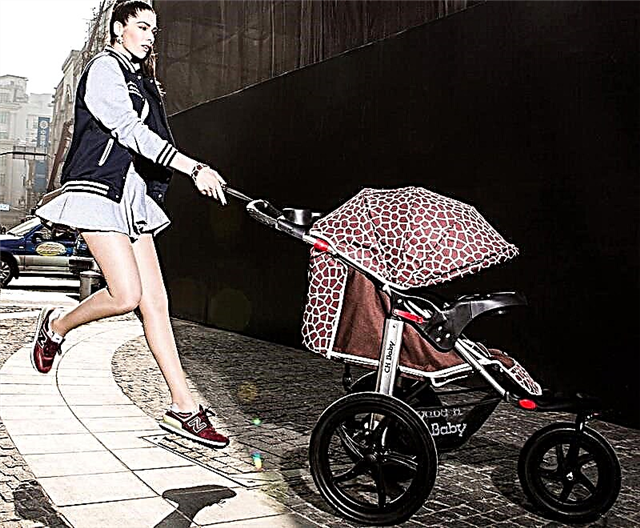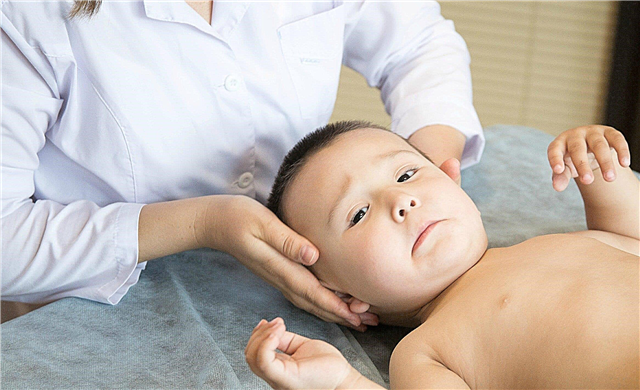Pediatric neurologists often diagnose muscular dystonia in young children. New parents are very frightened by this phrase. Especially those who have this first child. The main question arises: will their baby get better? This article will discuss how this disease is treated. In particular, for muscular dystonia, children's massage and gymnastics have the most effective effect.
How does muscular dystonia manifest?
Muscular dystonia is a disturbance of normal muscle tone in infants, upward, downward, or a combination of both. What should a normal baby look like?
The unborn baby in the mother's tummy is very compact. If in the first months of pregnancy he is still in free swimming, then in the last trimester he has to take a certain position in order to fit. The appearance of a healthy newborn is connected with this: the tiny arms are bent at the elbow joints, the fists are compressed and close to the chest, the hips are slightly turned to the sides, the legs are also bent at the knees and hip joints. This position of the baby is due to increased muscle tension and is called "physiological muscle hypertonicity."

Naturally, after birth, the baby will be in this position for some time. Indeed, in the womb, he lay in this position for a long time, and it will take him some time to assume the generally accepted human form. The tone of the handles will return to normal by 3 months, and the tone of the legs - by 4. If by this time the muscle tension does not pass, then it will be a pathology - hypertonicity.
The next pathology called "hypotonus" can be suspected from the first days of life. The newborn is passive, lies with arms and legs spread out, sometimes even along the body, moves little. If you make passive movements in the limbs of the baby, then he will not offer resistance. In the prone position, the baby will not try to hold his head.
It is also often observed when the muscles of one half of the body are tense in a newborn, and the other half, on the contrary, is excessively relaxed. And the small body will bend in an arc, as tense muscles pull the weak ones in their direction. The combination of these symptoms is also one of the types of muscular dystonia.
What is the reason for muscular dystonia?

- A difficult pregnancy with conditions such as prolonged maternal toxicosis, threat of miscarriage, placental abruption, polyhydramnios, gestosis.
- Fetal hypoxia, umbilical cord entanglement of the neck.
- The impact of various harmful factors on the body of a pregnant woman: poor ecology, poor-quality food, alcohol, nicotine, drugs, an unfavorable psychological environment - all this can cause a violation of muscle tone.
- Diseases of a pregnant woman: colds, various infections, diabetes mellitus.
- Rapid or prolonged labor, caesarean section, use of anesthesia during labor, bleeding, birth trauma.
How is muscular dystonia treated?
Timely diagnosis is the first step towards curing muscular dystonia. This is done by neurologists, neonatologists in a maternity hospital, pediatricians in a children's clinic.
The main role is played by the pediatric neurologist. On the basis of examination, instrumental research methods, he prescribes complex treatment. This can be taking various medicines, physiotherapy procedures. By the way, there is no one definite remedy for this disease.
With muscular dystonia, the main and most effective methods of therapy are baby massage and gymnastics.
With muscular dystonia in an infant, in no case should you ignore the disease and self-medicate!
The massage has a strong activating effect on the immature nervous system of the infant. Already from 1.5 months, the child can begin to carry out massage and gymnastics.
During massage and gymnastics, impulses appear in the skin, which reach the brain through nerve fibers. In response, the brain produces special substances that have a beneficial effect on the neuropsychic and physical development of the child.
General recommendations for massage
- For children under one year old, massage and exercises are carried out in a supine position.
- You should first lubricate your hands with massage oil or cream.
- The room should be at a comfortable temperature for the baby.
- Massage should be carried out one hour or one hour after feeding.
- Babies should be massaged from the periphery to the center, that is, go in the direction from the hands to the shoulders, from the feet to the groin area (without affecting the child's genitals).
- It will be interesting if the massage movements and the entire massage procedure are accompanied by nursery rhymes and nursery rhymes.
- Massages and exercises are performed when the child is in good health.
The massage technique depends on the type of dystonia.
General principles of massage for infants with hypertension

Hypertonia implies primarily the tension of the flexor muscles of the arms (located on the anterior-inner surface of the upper limb) and adductor muscles of the thighs (located on the inner side of the thighs). It is necessary to reduce the tension of these muscle elements. This effect can be achieved by stroking. It is necessary to stroke the body of a newborn slowly, gently, without lifting your hands from the surface of the skin.
At the same pace, you can perform another relaxing technique - rubbing.
To knead the muscles with hypertonicity is necessary deeply, slowly, there should be, as it were, a feeling of "pleasant pain", but one should not go beyond the boundaries of unpleasant pain sensations. It is interesting to watch babies during such a session. If everything is done correctly, they usually do not cry, but grunt funny.
You can do a special technique - shaking. In this case, the adult's hand tightly grasps the child's handle or leg and shakes it with insignificant amplitude and effort.
Relaxing massage algorithm
- Stroking the pens. This can be easily done in this way: holding the right hand of the child with your left hand, stroke the forearm, shoulder. It is necessary to carry out the procedure of children's massage interspersed with exercises. During the exercises, the basic skills of the newborn are used - reflexes.
- Grasp reflex. Let the child grab the thumbs, with the remaining 4 fingers we grasp his wrist and slightly raise the upper half of the baby's body above the table surface. Each subsequent sessions raise the baby 1 - 2 cm higher.
- Shaking the pens.
Scientists have established a close connection between improving the fine motor skills of the pens and the mental development of a child. Much attention should be paid to massage and exercise of the hands, fingers and palms. In this case, one can expect that the child will grow up as a "prodigy" - he will speak faster than his peers, learn to read, and at school he will study with only A's.
- Stroking the legs.
- Rubbing, kneading and shaking calves.
- If you press on the baby's sole at the base of the toes, the foot should bend. If you run your finger along the outer edge of the foot from the baby's little toe to the heel, the foot should unfold. You can use these reflex phenomena as exercises.
- Shaking the legs.
- Flexion and extension of the legs.
- Stomping feet on the table.
- Stroking the tummy clockwise.
- Laying out the baby on the tummy.
- Stroking the back, lower back, buttocks.
- Stroking the chest area from the sternum to the sides.
- The automatic gait reflex is also used as an exercise. You should give the child an upright position, leaning slightly forward. When the baby finds support, he will begin to walk automatically.
- You can give the baby a pose of an embryo and swing in different directions in this position.
You can substitute your hands as support to the soles of the child lying on the tummy - he will reflexively push off and crawl forward.
If there is a fitball, you can put the child on it with his stomach, holding his legs, swing back and forth.
In general, the technique is similar to the usual hygienic relaxing massage for healthy children.
General principles of massage of infants with hypotension

When the body is hypotonic, you need to do a special massage - toning. Receptions should be performed vigorously, at an accelerated pace. It is necessary to strengthen the muscles of the back of the baby's body. The techniques of rubbing, kneading, tapping with fingers, patting, pinching are used.
Consequences of untreated muscle hypotonia
- Lagging in physical development. The kid will start to hold his head late, sit down, crawl, get up and walk.
- Weak back muscles cannot support the spine properly, which ultimately leads to scoliosis, poor posture and gait.
- If the muscles of the arms are weak, it will be difficult for a child to learn to write. As a result, in the future there will be problems with schooling.
- With an advanced case of hypotonia, there is a great risk of developing muscular dystrophy (it will be difficult for the child to move) or atrophy (the child will not be able to move on his own at all).
To perform a massage, you can contact a specialist. However, many exercises parents can easily do on their own.
Gymnastics to tone your baby's muscles
The following techniques have a tonic effect:

- laying out on the tummy. Recommended to be carried out several times a day;
- turns from the back to the side or to the stomach;
- reflex crawling;
- reflex walking;
- "swimmer". The child should be held with one hand under the chest, with the other on the legs. In this case, the head and upper body should be raised, the spine should be in the extension position;
- Soaring. It is necessary to hold the child in weight, placing both hands, palms up, under the stomach;
- laying out the baby with his back on the fitball: holding his legs, swing back and forth.
What massage techniques and exercises should be carried out with a combination of increased and decreased muscle tone?
The purpose of the massage for asymmetric muscle tone is to relax tense and tone up the baby's weak muscles. In this case, a differentiated massage is performed.
On the side of tense muscles, stroking, slow, soft rubbing and kneading movements, vibration and shaking are performed.
On the side of the weakened muscles, stroking, vigorous rubbing and kneading, pinching, tapping and patting are used.
Fitball exercises are also helpful. The baby is placed on the ball with his stomach or back. Mom fixes by the legs. Dad can also hold the handles. Fitball rolls to the right and to the left, but with an emphasis on the side with weak muscle tone.
Prevention of muscular dystonia
In order to prevent the development of this kind of pathology in an unborn child, a woman during and after pregnancy should adhere to the recommendations below.
- Doctors recommend planning a pregnancy. A woman who is going to become a mother must undergo a comprehensive health examination. No wonder they say: a healthy mother is a healthy baby. The future dad also needs to undergo a physical examination.
- During pregnancy, a woman should eat right, walk in the fresh air every day, in the absence of contraindications, do gymnastics, breathing exercises, do yoga, give up bad habits, and regularly attend antenatal clinics.
- After the baby is born, it is important to organize proper care (breastfeeding, adequate sleep, bathing, walking, daily routine). It is important to visit the children's clinic, follow the instructions of the pediatrician and the visiting nurse.
If you experience incomprehensible symptoms, you do not need to sit at home, relying on chance. In newborns, time flies by. And as a result of lost time, the disease can progress and become irreversible.



